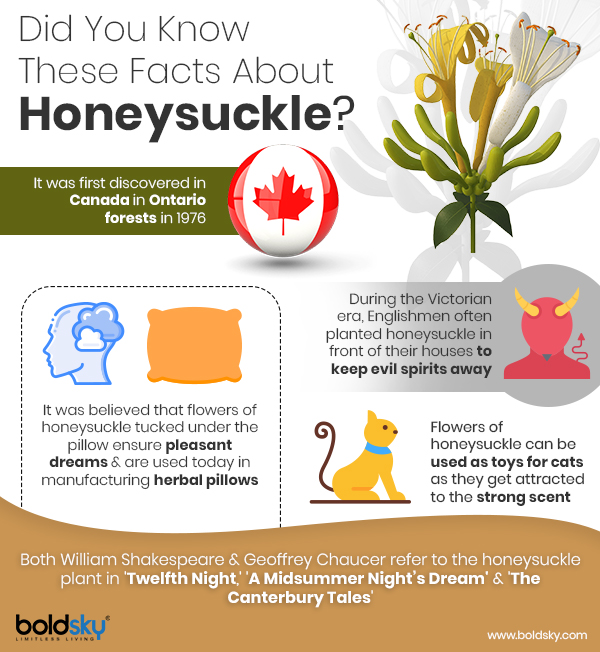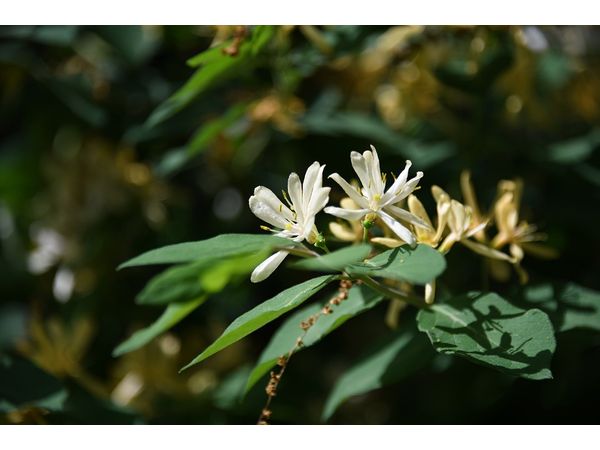Just In
- 22 min ago

- 11 hrs ago

- 14 hrs ago

- 14 hrs ago

Don't Miss
- Finance
 1:1 Bonus Issue: Multibagger FMCG Stock Under Rs 340 Approves Allotment Of Bonus Share
1:1 Bonus Issue: Multibagger FMCG Stock Under Rs 340 Approves Allotment Of Bonus Share - Sports
 Pakistan vs New Zealand Live Streaming: PAK vs NZ Live Telecast in UK, USA and Canada
Pakistan vs New Zealand Live Streaming: PAK vs NZ Live Telecast in UK, USA and Canada - Movies
 Ranam OTT Release Date And Platform: When And Where To Watch Vaibhav Reddy Starrer Movie Online
Ranam OTT Release Date And Platform: When And Where To Watch Vaibhav Reddy Starrer Movie Online - News
 Delhi Capital's Captain Rishabh Pant Gathers Praise For His Wicketkeeping Skills, Stunning Catch
Delhi Capital's Captain Rishabh Pant Gathers Praise For His Wicketkeeping Skills, Stunning Catch - Education
 SCCL Recruitment 2024; Application process, Selection criteria and more
SCCL Recruitment 2024; Application process, Selection criteria and more - Automobiles
 Mahindra 3XO SUV Latest Teaser Reveals Connected Car Tech: All Details Here
Mahindra 3XO SUV Latest Teaser Reveals Connected Car Tech: All Details Here - Technology
 OnePlus 13 Early Leak Hints at a Revamped Camera Island, and Fast Charging to Remain at 100W
OnePlus 13 Early Leak Hints at a Revamped Camera Island, and Fast Charging to Remain at 100W - Travel
 From Coconut Breaking on Head to Men Dressing as Women: 12 Unique Indian Rituals Explored
From Coconut Breaking on Head to Men Dressing as Women: 12 Unique Indian Rituals Explored
6 Science-backed Health Benefits Of Honeysuckle, Uses And Side Effects
Botanically termed as Lonicera, honeysuckle belongs to the Caprifoliaceae family. The plant produces white, yellow, orange or pink flowers and its cherry-looking berries are at times poisonous. Widely known for its medicinal properties, the leaves, seeds and flowers of the herb can benefit the human body in various ways.
Honeysuckle has a prominent place in Traditional Chinese Medicine, where it has been used for treating headache, fever, high blood sugar levels and so on [1] . The fragrant common garden plant is packed with phytochemicals, organic acids, flavonoids, and anthocyanins, as well as other antioxidant substances.

Let's get to know the different ways through which you can make use of this herb and how you can incorporate it into your routine.
Uses Of Honeysuckle
The herb is utilised for various purposes and they are as follows [2] :
- Digestive disorders
- Cancerous tumours
- Constipation
- Skin inflammation
- Itching
- Colds
- Fever
- Swelling
- Boils
- Sores
- Bacterial or viral infections
- Promoting sweating
Health Benefits Of Honeysuckle
From treating urinary disorders to managing diabetes, the health benefits possessed by the herb are many. Read on to know the way honeysuckle can benefit your body and mind [3] .
1. Boosts immunity
According to studies, the often toxic berries of the herb has proven to be beneficial in boosting your immunity. Acting as an immunomodulatory agent and also due to its anti-viral properties, honeysuckle berries aided in improving the immune system and protecting the body from infections and allergies [4] .
The herb contains powerful antioxidants, it's rich in Vitamin C and it's a great source of quercetin (an acid that fights free radicals) which contributes towards this benefit.
2. Improves oral health
The astringent and antibacterial properties possessed by the herb help improve your oral health by removing the bacteria that can cause oral problems like cavities, bad breath etc. Honeysuckle is a common ingredient in natural gargles and mouthwashes [5] .
3. Manages diabetes
According to studies, honeysuckle can help people with type 2 diabetes. The study revealed that the herb was able to decrease high levels of blood glucose levels and insulin resistance. The herb is shown to have anti-diabetic properties as well as anti-inflammatory abilities that can help to reduce the severity of diabetic nephropathy [6] .

4. Treats arthritis
The anti-inflammatory and antioxidant properties possessed by honeysuckle can help individuals suffering from arthritis [7] . Studies reveal that the phenolic compounds found in the honeysuckle berries are responsible for suppressing the production of inflammatory enzymes in the spleen, thereby aiding individuals suffering from various types of arthritis, including rheumatoid arthritis and psoriatic arthritis [8] .
5. Promotes digestion
Honeysuckle extracts can help improve your digestive system and help get relief from digestion related problems such as nausea, indigestion, constipation, enteritis, and bloating [5] .
6. May prevent cancer
A great source of quercetin, an acid that fights free radicals, honeysuckle extracts are said to prevent the onset of cancer by killing off the free cancer-causing radical cells [9] . The extensive antioxidant and anti-inflammatory profile found in the flowers and berries of the plants are responsible for this benefit [10] .
Apart from these benefits, honeysuckle is also said to help eliminate inflammation in the respiratory tracts associated with bronchitis and sore throat, lower the pressure and normalize blood pressure, improve respiratory health, manage fever, flu and cold and treat skin inflammation and conditions, such as eczema, psoriasis, acne, and rosacea [11] .
Healing Honeysuckle Tea Recipe
Ingredients[12]
- 1 handful of honeysuckle flowers
- 2 glasses of water
- Ice for serving
Directions
- Gently crush or bruise the honeysuckle flowers
- Add honeysuckle flowers to a pitcher or cup
- Add water and stir.
- Cover it and keep it in the refrigerator overnight, or at least 6-8 hours up to 15 hours
- Strain the flowers out
- Add the ice cubes and enjoy!
Side Effects Of Honeysuckle
- Individuals with bleeding disorders should not use honeysuckle as it can thin down blood.
- The berries of most species are toxic and can cause serious gastrointestinal side effects [13] .
- Pregnant women and lactating mothers should avoid using the herb.
- [1] Wang, M. Y., Srinivasan, M., Dasari, S., Narvekar, P., Samy, A., Dontaraju, V., ... & Munirathinam, G. (2017). Antioxidant Activity of Yichun Blue Honeysuckle (YBHS) Berry Counteracts CCl4-Induced Toxicity in Liver Injury Model of Mice. Antioxidants, 6(3), 50.
- [2] Becker, R., & Szakiel, A. (2018). Phytochemical characteristics and potential therapeutic properties of blue honeysuckle Lonicera caerulea L.(Caprifoliaceae). Journal of Herbal Medicine.
- [3] Meng, X. L., Zhu, Z. X., Lu, R. H., Li, S., Hu, W. P., Qin, C. B., ... & Nie, G. X. (2019). Regulation of growth performance and lipid metabolism in juvenile grass carp (Ctenopharyngodon idella) with honeysuckle (Lonicera japonica) extract. Fish physiology and biochemistry, 1-11.
- [4] Oszmiański, J., & Kucharska, A. Z. (2018). Effect of pre-treatment of blue honeysuckle berries on bioactive iridoid content. Food chemistry, 240, 1087-1091.
- [5] Kucharska, A., Sokół-Łętowska, A., Oszmiański, J., Piórecki, N., & Fecka, I. (2017). Iridoids, phenolic compounds and antioxidant activity of edible honeysuckle berries (Lonicera caerulea var. kamtschatica Sevast.). Molecules, 22(3), 405.
- [6] Kucharska, A., Sokół-Łętowska, A., Oszmiański, J., Piórecki, N., & Fecka, I. (2017). Iridoids, phenolic compounds and antioxidant activity of edible honeysuckle berries (Lonicera caerulea var. kamtschatica Sevast.). Molecules, 22(3), 405.
- [7] Zhao, J., Lin, Y., Zhao, Y., Wang, Y., Ning, C., Ma, Y., & Meng, X. (2018). Polyphenol-rich blue honeysuckle extract alleviates silica particle-induced inflammatory responses and macrophage apoptosis via NRF2/HO-1 and MAPK signaling. Journal of functional foods, 46, 463-474.
- [8] Chmiel, T., Kusznierewicz, B., Namieśnik, J., Górecki, T., & Bartoszek-Pączkowska, A. (2015). Blue-berried honeysuckle a promising cancer preventing fruit; Polish genotypes as a source of bioactive phytochemicals. Acta Biochimica Polonica. Supplement, 62, 18-18.
- [9] Li, F., Zhao, H., Xu, R., Zhang, X., Zhang, W., Du, M., ... & Fan, L. (2019). Simultaneous optimization of the acidified water extraction for total anthocyanin content, total phenolic content, and antioxidant activity of blue honeysuckle berries (Lonicera caerulea L.) using response surface methodology. Food Science & Nutrition.
- [10] YU, J. X., & ZHENG, Y. Q. (2016). Study on Processing Technology of Fermented Blueberry and Honeysuckle Wine. Food Research and Development, (8), 31.
- [11] Oszmiański, J., Wojdyło, A., & Lachowicz, S. (2016). Effect of dried powder preparation process on polyphenolic content and antioxidant activity of blue honeysuckle berries (Lonicera caerulea L. var. kamtschatica). LWT-Food Science and Technology, 67, 214-222.
- [12] Park, S. I., Lee, Y. J., Choi, S. H., Park, S. J., Song, C. H., & Ku, S. K. (2016). Therapeutic effects of blue honeysuckle on lesions of hyperthyroidism in rats. The American journal of Chinese medicine, 44(07), 1441-1456.
- [13] Caprioli, G., Iannarelli, R., Innocenti, M., Bellumori, M., Fiorini, D., Sagratini, G., ... & Quassinti, L. (2016). Blue honeysuckle fruit (Lonicera caerulea L.) from eastern Russia: phenolic composition, nutritional value and biological activities of its polar extracts. Food & function, 7(4), 1892-1903.
-
 healthExclusive: World Oral Health Day 2024: Doctor Shares How Diabetic Patients Can Maintain Their Oral Health
healthExclusive: World Oral Health Day 2024: Doctor Shares How Diabetic Patients Can Maintain Their Oral Health -
 healthWhat Is VIP? It Is Not What You Think! This One Is Connected To Blood Glucose, Here's What You Need To Know
healthWhat Is VIP? It Is Not What You Think! This One Is Connected To Blood Glucose, Here's What You Need To Know -
 pregnancy parentingWhat Are The 4 Must Have Vitamins For Kids With Diabetes?
pregnancy parentingWhat Are The 4 Must Have Vitamins For Kids With Diabetes? -
 healthDoes This Everyday Cooking Ingredient Trigger Diabetes?
healthDoes This Everyday Cooking Ingredient Trigger Diabetes? -
 healthRoller Coaster Effect In Diabetes: Why Does My Blood Sugar Level Go Up And Down, How To Stop It
healthRoller Coaster Effect In Diabetes: Why Does My Blood Sugar Level Go Up And Down, How To Stop It -
 healthSinger Shakira Loves These 2 Indian Sweets! How To Make It Diet-Friendly?
healthSinger Shakira Loves These 2 Indian Sweets! How To Make It Diet-Friendly? -
 healthWorld Diabetes Day 2023: 3 Weird Things That Can Put You At Risk Of Developing Diabetes
healthWorld Diabetes Day 2023: 3 Weird Things That Can Put You At Risk Of Developing Diabetes -
 healthWorld Diabetes Day 2023: Daily Habits That Make One At Risk Of Diabetes
healthWorld Diabetes Day 2023: Daily Habits That Make One At Risk Of Diabetes -
 wellnessWorld Diabetes Day 2023: Avoid These Common Mistakes When Testing Blood Sugar Levels
wellnessWorld Diabetes Day 2023: Avoid These Common Mistakes When Testing Blood Sugar Levels -
 healthDiwali 2023: Kalakand Recipe For Diabetic People; It Is Sugar-Free & Keto-Friendly
healthDiwali 2023: Kalakand Recipe For Diabetic People; It Is Sugar-Free & Keto-Friendly -
 healthHow Poor Air Quality During Can Raise Your Diabetes Risk
healthHow Poor Air Quality During Can Raise Your Diabetes Risk -
 healthWhip Up These 3 Diwali Sweets For Your Diabetic Mom Over 40
healthWhip Up These 3 Diwali Sweets For Your Diabetic Mom Over 40


 Click it and Unblock the Notifications
Click it and Unblock the Notifications



